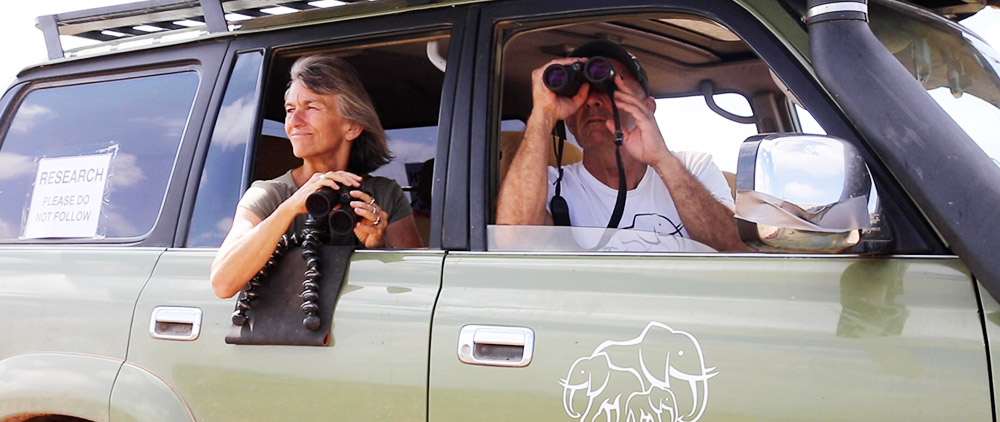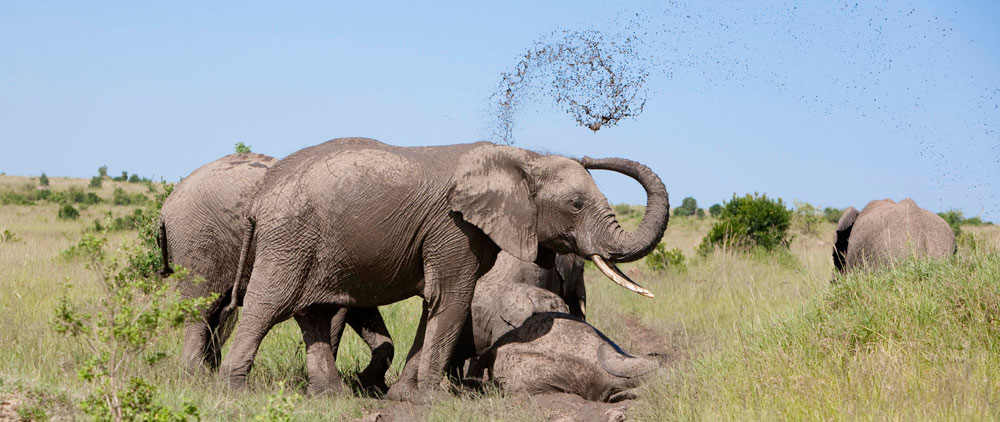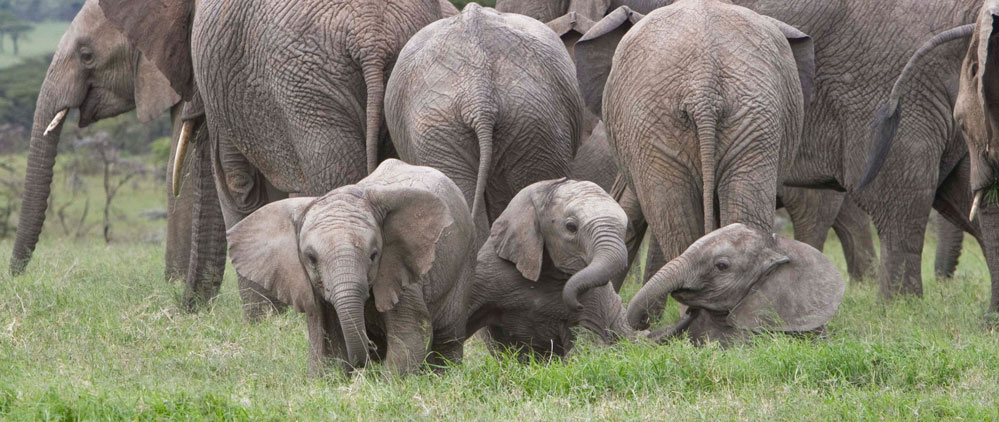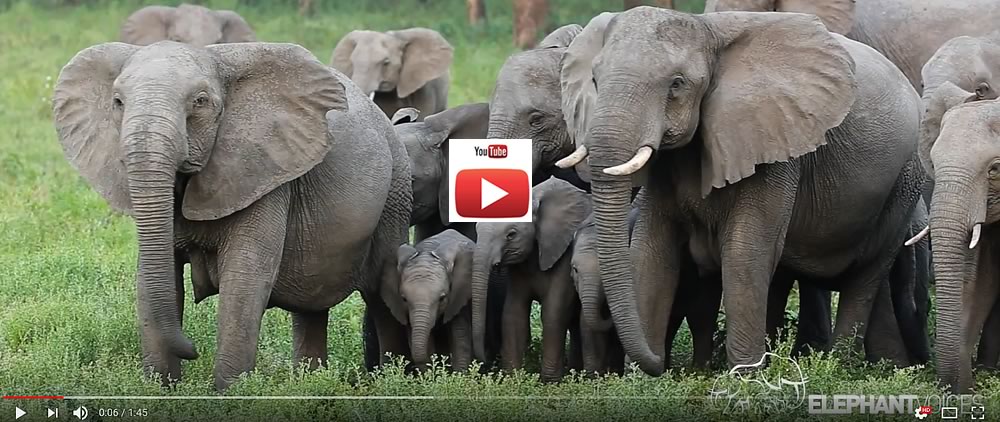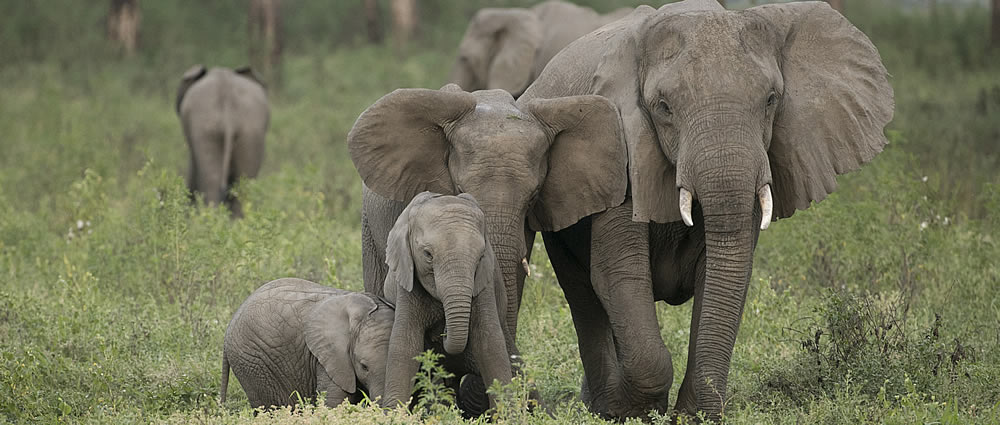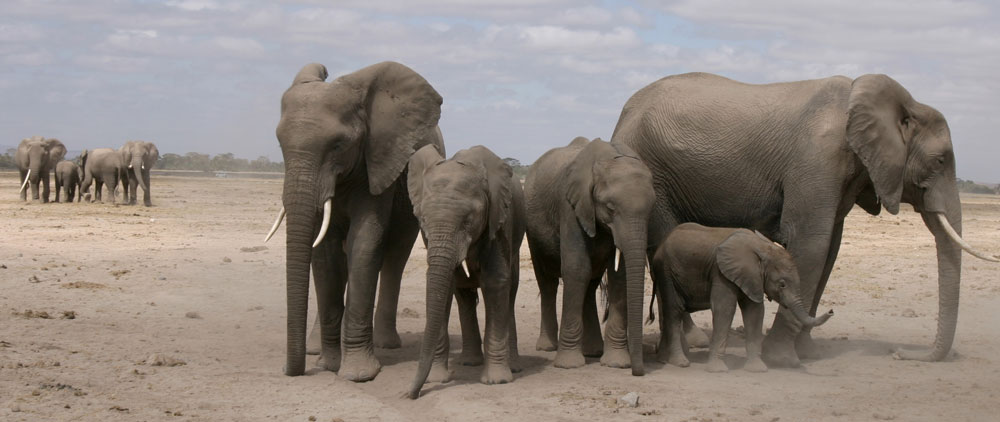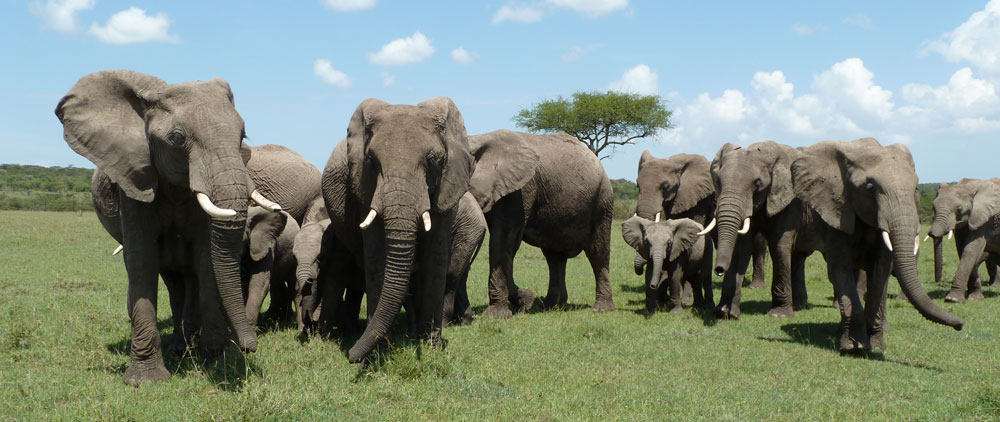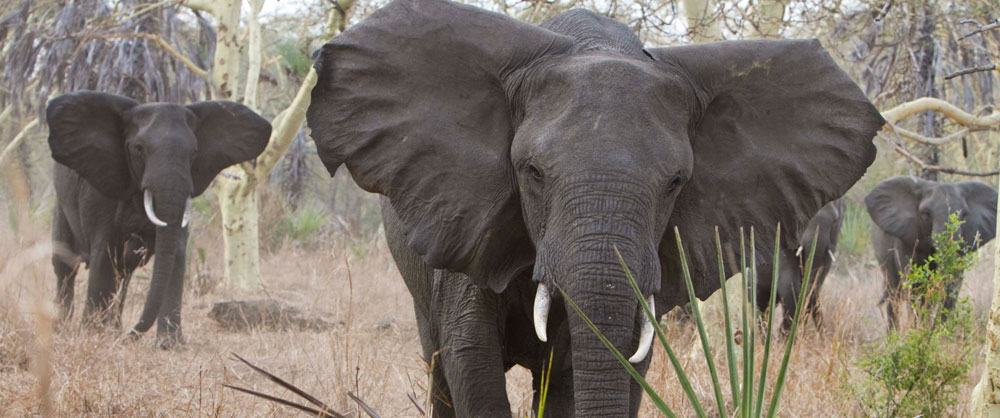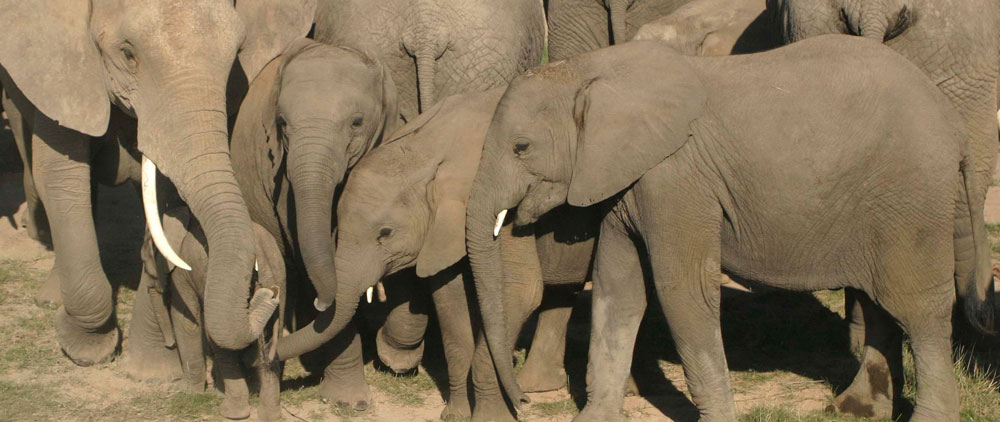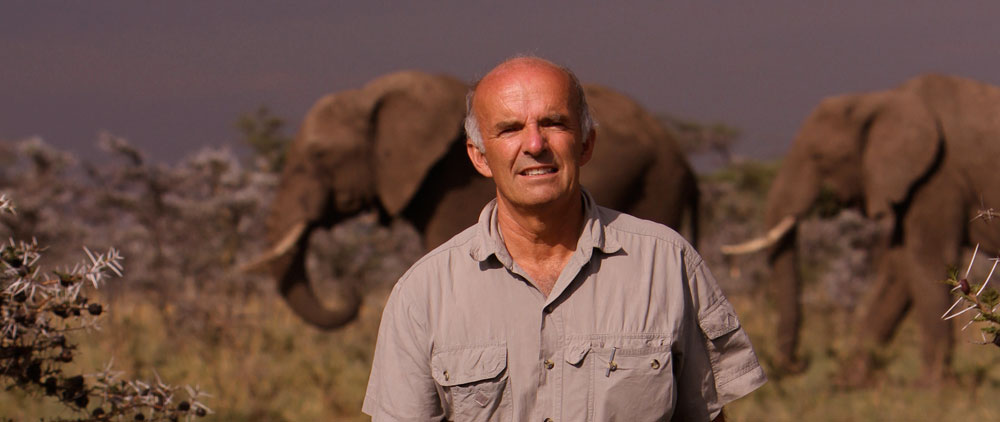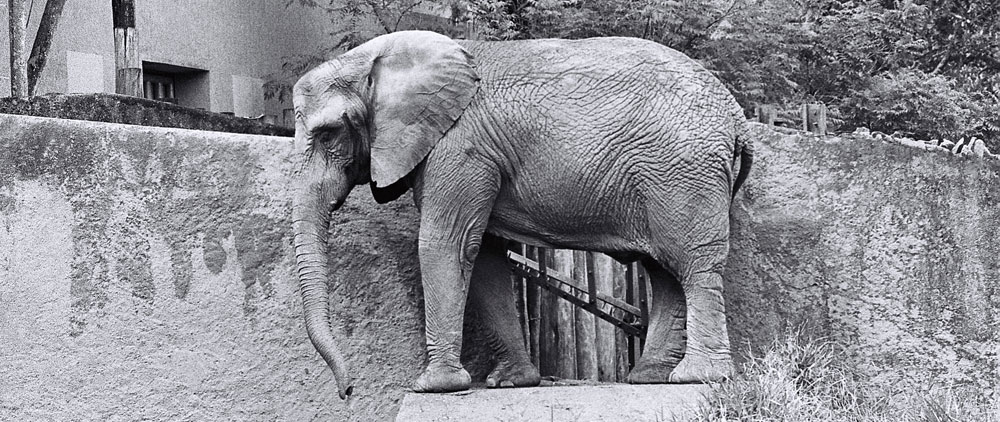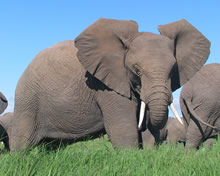tactile signals
-
Tactile communication
Elephants are extremely tactile animals. They purposefully touch one another using their trunk, ears, tusks, feet, tail, and even their entire body. Tactile interactions between elephants occur during a broad range of contexts including Aggressive, Affiliative, Coalition Building, Conflict & Confrontation, Advertisement & Attraction, Courtship, Social Play, Calf Reassurance & Protection Calf Nourishment & Weaning and Attentive.

Depending upon how their tusks are employed, elephants may use them to poke another aggressively, to gently lift a baby from a mud wallow, or to express solidarity during a greeting ceremony.
Elephants often use their ears to rub against another affectionately or in play, or their tails to swat another with force or to gently check for the presence of a calf.
An elephant's trunk may be used to caress, reassure or assist a calf, to explore the genitals, mouth or temporal glands of a family member, to touch or explore the body of a dead elephant, to touch or push another in play. In more aggressive or defensive contexts an elephant may use its trunk to slap or to block, or to reach out to another for reassurance when facing a predator. In sexual contexts elephants use their trunks to explore,
-
Visual communication
For years naturalists have written about the behavior of elephants without realizing they were contributing to the beginnings of a foundation of knowledge about their visual communication. Many of these descriptions are part of popular language. For instance, people talk about an angry elephant "charging", "flapping its ears", "kicking up dust" or "tossing its trunk." In the course of their research early elephant ethologists, too, wrote about specific displays using words such as "the musth walk", "standing tall" or "trunk curling," to name but a few.
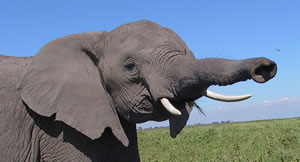 So how do elephants send visual signals? The answer in its simplest form is that they use their heads, eyes, mouth, ears, tusks, trunk, tail, feet and even their whole body to signal messages to one another and to other species. For example, a threatening or dominant elephant
So how do elephants send visual signals? The answer in its simplest form is that they use their heads, eyes, mouth, ears, tusks, trunk, tail, feet and even their whole body to signal messages to one another and to other species. For example, a threatening or dominant elephant  signals her status by trying to appear larger, carrying her head high above her shoulders, spreading her ears, climbing up a termite mound, while a subordinate elephant carries his head low and his ears back. An elephant who is fearful raises her tail and lifts her chin. A socially aroused elephant raises tail and her head, and lifts and rapidly flaps her ears.
signals her status by trying to appear larger, carrying her head high above her shoulders, spreading her ears, climbing up a termite mound, while a subordinate elephant carries his head low and his ears back. An elephant who is fearful raises her tail and lifts her chin. A socially aroused elephant raises tail and her head, and lifts and rapidly flaps her ears.



